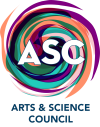Millions of Travelers Can See Work by Charlotte Artists
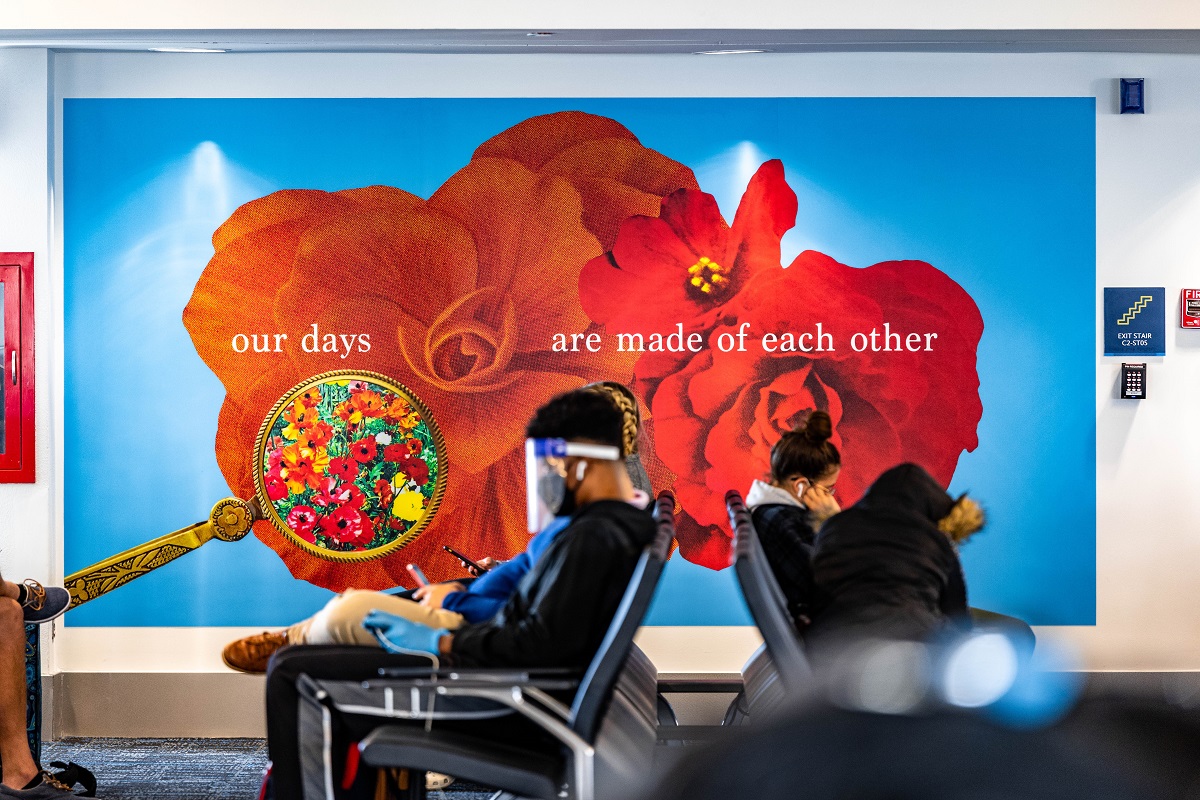
By Bernie Petit
Millions of travelers at Charlotte Douglas International Airport are able to witness the artistic talent found in Charlotte-Mecklenburg, regardless of whether they’re only in town on a layover.
Murals created by seven local artists—Ráed Al-Rawi, Nico Amortegui, Nellie Ashford, Amy Bagwell, Jonathan Grauel, Ruth Ava Lyons and Ben Premeaux—are prominently featured in the airport’s redesigned concourses.
“I don’t have words to describe how it makes me feel,” Ashford said. “It makes my heart beat a stronger beat. It makes me smile because here I am in this great big space and I’ll get to be in the hearts of many people, we’ll never know who, but I just feel so honored.”
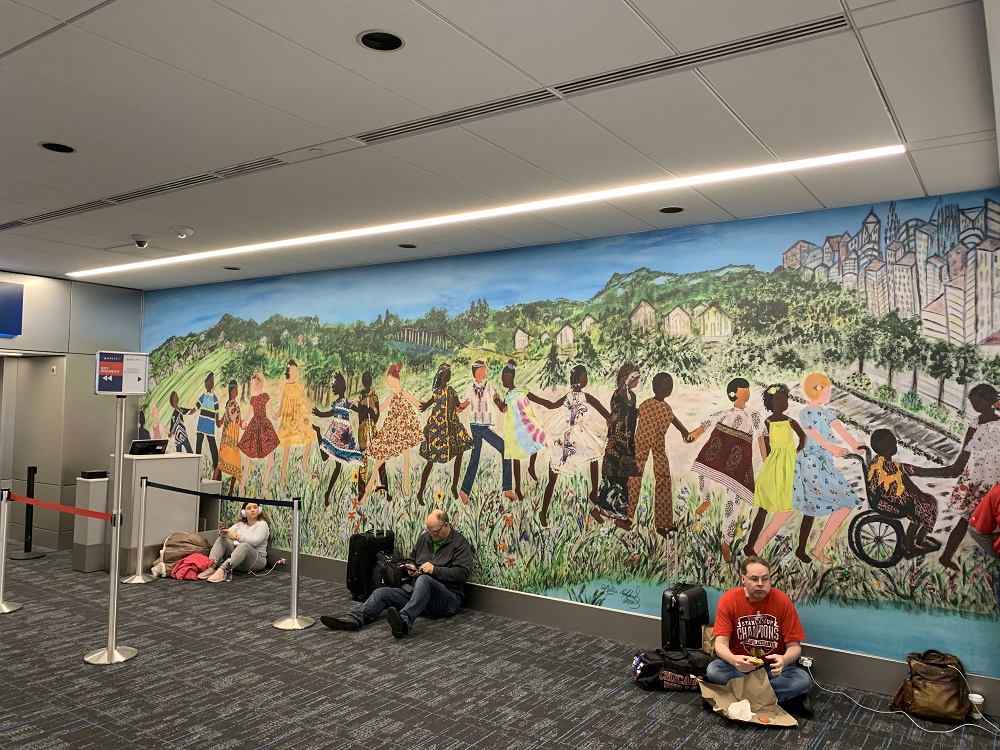
Sharing Charlotte’s History
As part of the ongoing terminal improvement program, ASC, in partnership with the Public Art Commission and the airport, commissioned seven Mecklenburg County artists to create original murals for the airport, with the murals being installed in 2019 and 2020.
Several murals now provide travelers with a sense of our region’s history, including the work of Ashford, a self-taught folk artist in her 70s, grew up in the Oakdale area in western Mecklenburg County.
“I went to school in that area—a four-room school as a matter of fact,” she said. “My roots are here.”
Her artwork is often inspired by memories of her past. Much of the cloth used to dress the people in her artwork reflects real-life experiences.
“Walk Together Children,” one of her two airport artworks, incorporates used fabric in a nod to a way of life where little was wasted. (Non-digitally produced artworks in the airport mural program were photographed and digitally reproduced to scale.) It celebrates children as our future while connecting to the Charlotte of yesteryear, from old shotgun houses to an abundance of greenspace and wildlife.
“I wanted to give you a sense of feeling what our Charlotte has been and give you an opportunity to know what we have experience at my age in the Charlotte area,” she said.
Grauel found inspiration in the region’s textile and stock car racing legacies. Symbolic reminders such as yarn spindles, smoke stakes, textile mill machinery and race cars are whimsically placed in the villages he created in his murals, “Texture of Time in Flight” and “Playful Race of Life Patterns.”
“The influence of those two heritages of Charlotte become the elements of the village,” he said.
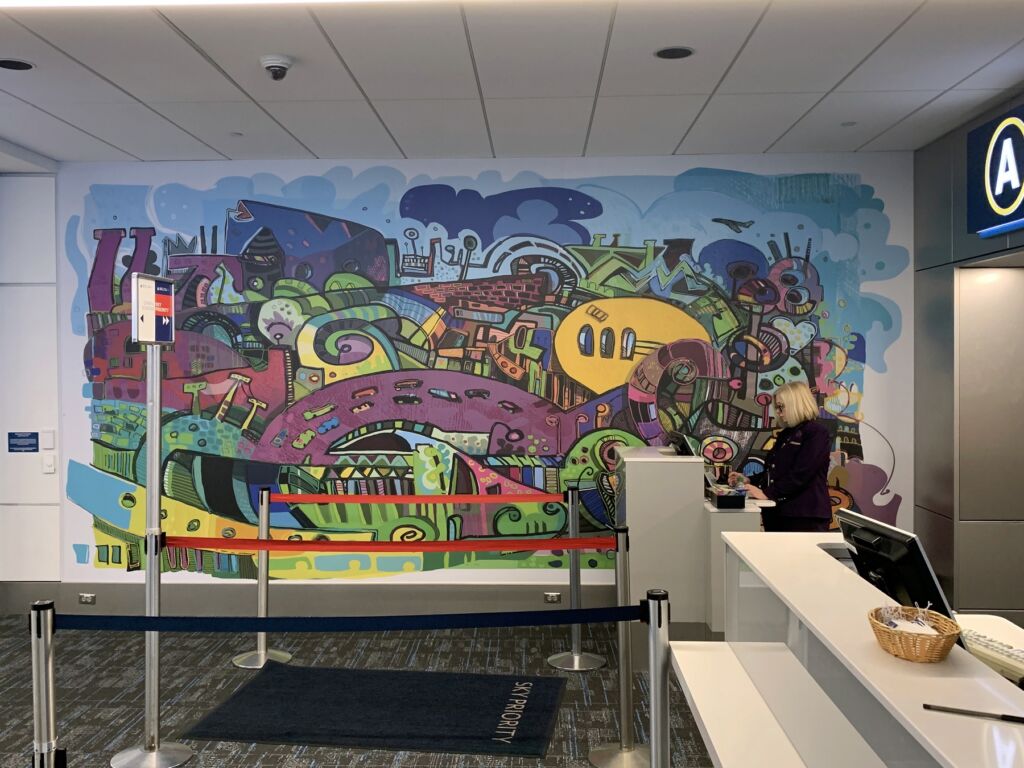
Adding Local Perspective
The murals are among the dozens of artworks found in the airport’s public art program, which promotes Charlotte and the region while enhancing the passenger experience.
The artworks by Mecklenburg artists provide local perspectives of the region’s story as the airport—which welcomes more than 43 million passengers annually and is ranked among the top 10 busiest airports in the world—continues to grow.
“It’s amazing just to have more art in the city,” Amortegui, whose airport murals are a celebration of women, told The Charlotte Observer shortly after the first murals were installed. “That’s the biggest thing, to have it in an airport which is so busy. Sometimes it helps to break through the craziness.”
The mural program also highlights the value of creatives in Charlotte-Mecklenburg.
“It’s the best way to communicate to our city residents and visitors our pride in our local artists, who are professionals and first class,” Lyons said.

Making Passengers Smile
The airport murals brighten functional spaces and help orient travelers to their location. They also provide calm spaces or unexpected experiences for passengers.
“As they’re walking through, whether they’re stressed or hurried because they’re getting their plane, I want them to see those colors and shapes and go, ‘Hmm, it kind of makes me smile, the playfulness of it,’” Grauel said.
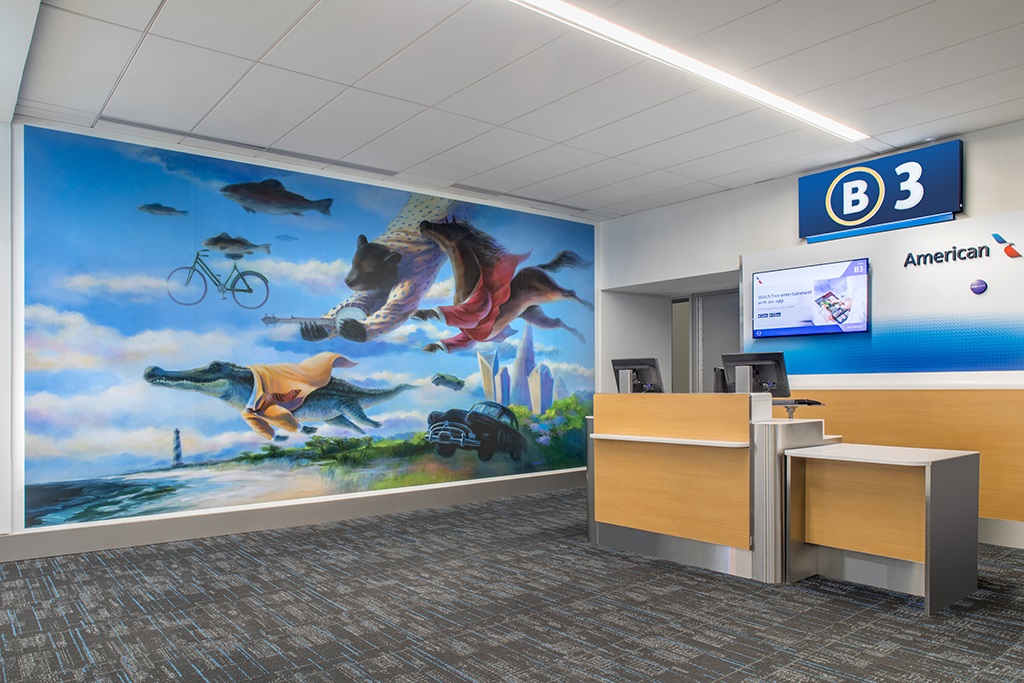
“Journey 1” and “Journey 2” – the airport murals by Al-Rawi, an Iraqi-American artist who began his career as an illustrator and cartoonist – reference how travel impacts the entire self.
“Traveling is not only going to our destinations through these metal tubes we call airplanes, it’s also traveling in our mind and thoughts,” he said. “I consider it as our journey in life (with) the imagination of flying creatures representing freedom from gravity.”
Lyons said her artistic process was “broadened by using a larger combination of media that I generally limit in a single artwork” in the creation of “Interplay I” and “Interplay II,” her environmental-themed murals for the airport.
“I hope (travelers) will feel a sense of well-being and wonder by being connected to the natural world through nature-oriented imagery,” she said.
For the selected artists, having public artwork at Charlotte Douglas International Airport strengthens their connections to the city.
“It’s really exciting,” Grauel said. “It feels like I’m part of Charlotte in a way I wasn’t before.”
*This is an updated version of a story originally published by ASC in 2020. Details from another past story by ASC were also used.
